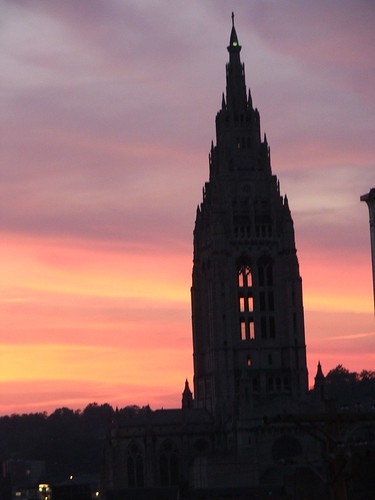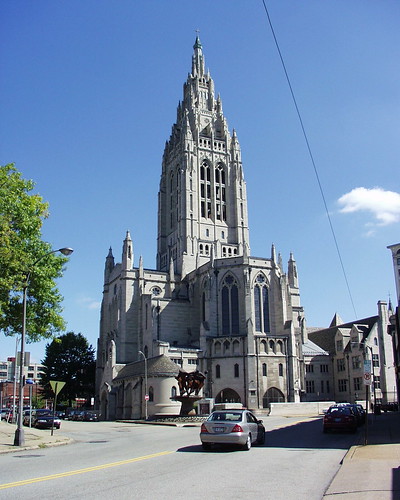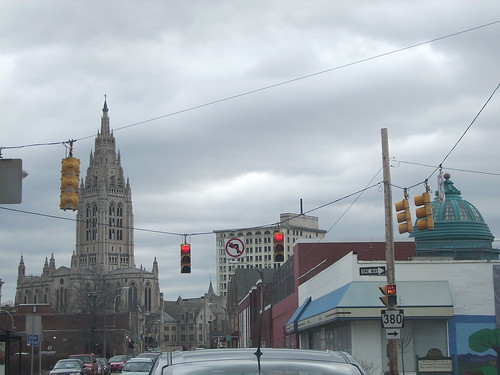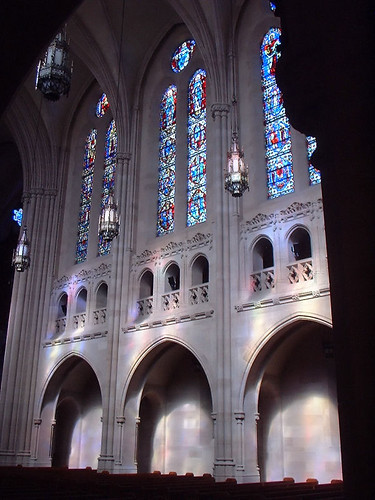Monday, December 11
East Liberty Presbyterian Church, Pittsburgh

The tower, in profile.

The central crossing-tower and apse.

The urban context

The front facade

Some aspects of the front portal appear almost Hispano-Moorish (or Mudejar), adding to the subtle exoticism of the design
The exact significance of crossing-towers in church architecture is varied; there are numerous English and Continental Gothic examples, and their classical equivalent, the dome or lantern, is ubiquitous in Renaissance and Baroque designs. In some late nineteenth and early twentieth century instances, a large central crossing-tower can be connected with a church designed for preaching allowing to pack as many people as possible into hearing-distance of the pulpit; however, given the surprisingly conventional and even quasi-Catholic layout of the interior, I would suppose this was less a political choice than at the original design of St. John the Divine and St. Bart's, Park Avenue. Here, it gives considerable prominence to the church in its urban setting in a way that simple facade-towers would probably not have.

The chancel at Christmas.

A side-aisle.
In this view of the side-aisle, the abstract simplified elements that characterized Cram's later career are mixed with moments of high detail. This contrast is especially evident in the plain, untraceried rose windows overhead, which demonstrate what one critic has referred to as Cram's aesthetic use of "negative space." In the interior, it's quite striking, though the porthole-like appearance on the exterior is slightly odd.
Cram once said, in view of the building's surprisingly traditional liturgical layout and iconographic program, that all that needed to be done to make the sanctuary ready for a Catholic High Mass were six candles, a crucifix and twenty minutes of prep time. I'm told that a Catholic priest once was taking a tour of the premises and was directed to a window depicting the Apocalypse with a prominent image of the Woman Clothed with the Sun. "That," said the tourguide, "is the Queen of Heaven."
"Ah, the Virgin Mary," said the priest.
"No, we're not Catholics, it's the Queen of Heaven."
"Welllll, who's the Queen of Heaven then?"
The tourguide didn't know.
Maybe he should take those twenty minutes.












